|
General informationThe Global Astrophysical Telescope System (GATS) project is aimed at unique combination of medium-high resolution (R~40000) stellar spectroscopy with a duty-cycle comparable with satellite observations. 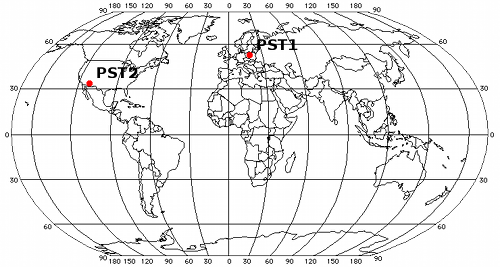 Location of existing PST1 and planned PST2 telescopes. By performing observations from two distant sites, that differ in longitude by about 120 deg, we will be able to achieve almost uninterrupted measurements for objects with appropriate sky coordinates. For declination larger than 20 degrees we will be able to make from 12h to 21h continuous spectroscopic observations per day. Resulting duty cycle of up to 87% is impossible to achieve from a vast majority single site ground-based observatories and is desirable for both our main science projects: pulsating and binary stars observations. 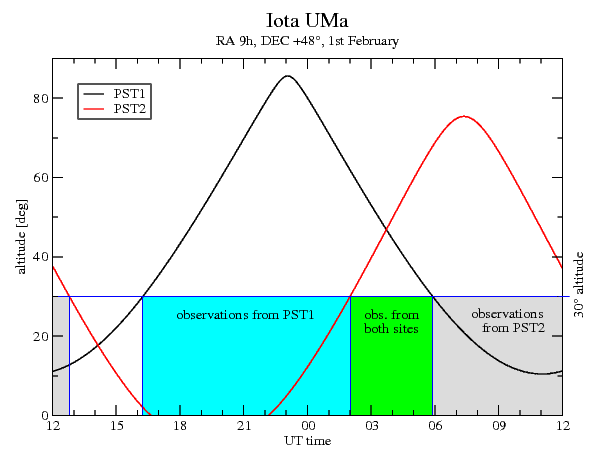 Simulation of GATS duty-cycle. Changes of altitude of Iota UMa from PST1 and PST2 site in 1st February. Detailed discussion below. Thanks to the stability of a fibre-fed echelle spectrograph we are getting a single point precision of the order of 100 m/s and better for late type stars with our first telescope. Similar performance is expected from the ongoing second telescope. Together they will give an excellent time and phase coverage that will significantly increase observing efficiency and help to reduce day-night cycle frequencies in periodograms. Because of excellent duty-cycle and possibility of observing bright stars the GATS project is also intended to supplement BRITE satellite constellation photometry with a wide wavelength range (~ 400-900 nm), medium-high resolution (R~40000), almost continuous spectroscopic observations. Duty-cycle simulationContour plots below show how long it is possible to observe an object at given celestial coordinates from single or both GATS sites in hours. Calculations are made for 1st January, assuming limiting object altitude of 25 degrees and Sun altitude of -12 degrees. 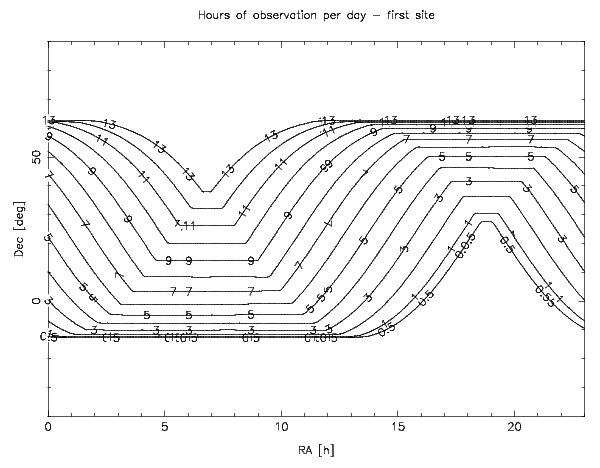 Duration (in hours) of uninterrupted observations possible to make form PST1 site. 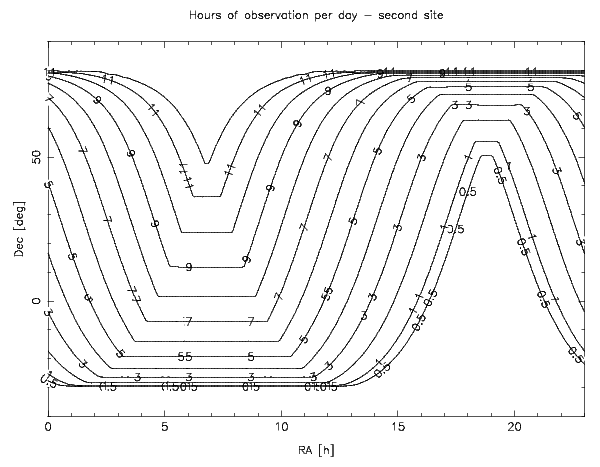 Duration (in hours) of uninterrupted observations possible to make form PST2 site. 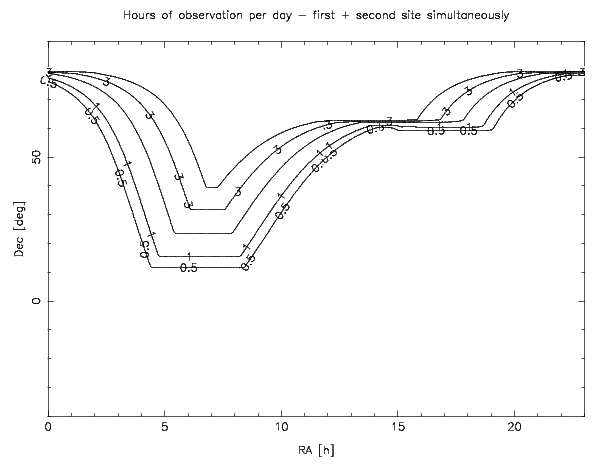 Duration (in hours) of uninterrupted observations possible to make simultaneously form both PST1 and PST2 sites. 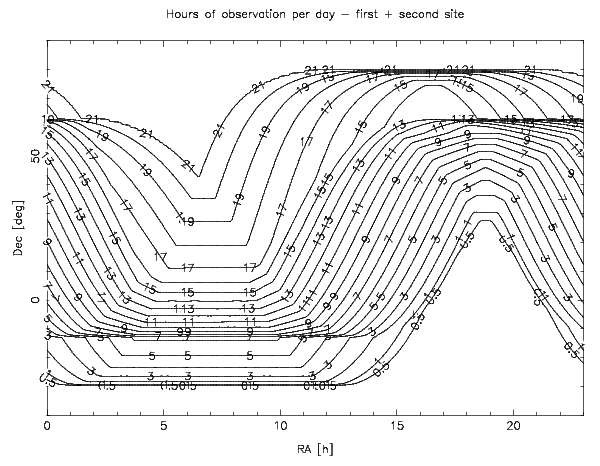 Duration (in hours) of uninterrupted observations possible to make by GATS. |
